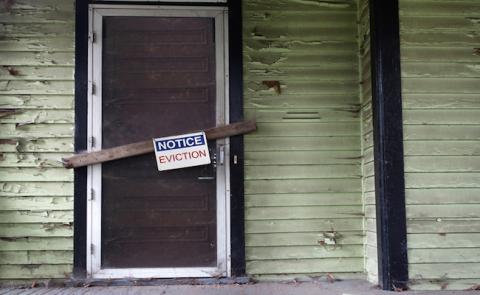The next time you hear someone moaning about Democrats trying to increase the minimum wage, hit him with this fact: There is nowhere in the United States that people can afford to live on minimum wage.
Make no mistake: nowhere means nowhere. We’re not just talking the big cities where everyone already knows how outrageous rent is. According to data compiled by the National Low Income Housing Coalition, there’s not a state or county in the country where the average price of housing is affordable to a person working full-time for minimum wage.
The government classifies a fair, affordable rent as one that costs 30 percent of a worker’s paycheck. Sadly, the rate for a two-bedroom apartment in every county is far more than 30 percent. Consequently, parents and single parents especially are in a bind.
If you’re thinking that minimum wage workers should settle for a decent one-bedroom apartment instead, that’s fair, but that’s also unrealistic. In most states, people earning minimum wage would need to work 60-80 hours per week to afford a one-bedroom apartment. In some states – Maryland, Virginia, New Jersey and New York – minimum wage employees would have to work over 100 hours each week.
Keep in mind that the average age of a person on minimum wage is 35. Moreover, 88 percent of people on minimum wage are over the age of 20. These aren’t just teenagers who still live at home – these are adults working full-time who ought to be able to afford housing.
Obviously, most people working minimum wage jobs aren’t homeless, so how do you explain this discrepancy? Unfortunately, these workers have to cut corners in other areas to cover the cost of housing. Many use more than half their paycheck to cover rent, meaning they have to skimp on other important things like food, education, health care and heat.
Can you stomach any more bad news? Here goes… While raising the minimum wage will certainly help to reduce some of the burden on workers, they still won’t be able to “afford” rent by the government’s standards.
Forget minimum wage – the average American earns just $15.42 per hour. However, people need to earn $20.30 to comfortably rent a two-bedroom abode in 2016. It’s not just the minimum wage workers who can’t afford their rent – it’s the average worker, too! Suddenly, the Fight for 15 campaign seems a lot more modest than its opponents paint it to be.
Since rent is outrageously expensive for even the average American worker, it’s easy to conclude that housing simply costs way too much these days. Where’s the “Rent Is Too Damn High” guy when you need him?
The fact that the cost of rent is no longer commensurate with the incomes of real Americans is a crisis. It’s no wonder that so many people are being evicted, disabled people are having trouble affording apartments and fewer women are able to flee domestic abuse because housing costs too much.
Housing should be a right, not a privilege. If the government can acknowledge that Americans cannot afford to pay rent anymore, then it’s time for some intervention to alleviate this problem.
Care2 was founded in 1998 with a simple mission: to help make the world a better place. Today, Care2 is a highly-engaged social network of 30 million citizen activists standing together for good and making extraordinary impact- locally, nationally and internationally- by starting petitions and supporting each other’s campaigns.


Spread the word